New Venture Fund Keeps Us in the Dark
Inquiries answered quickly by others go unanswered by SPARC, ORFG, and SPA
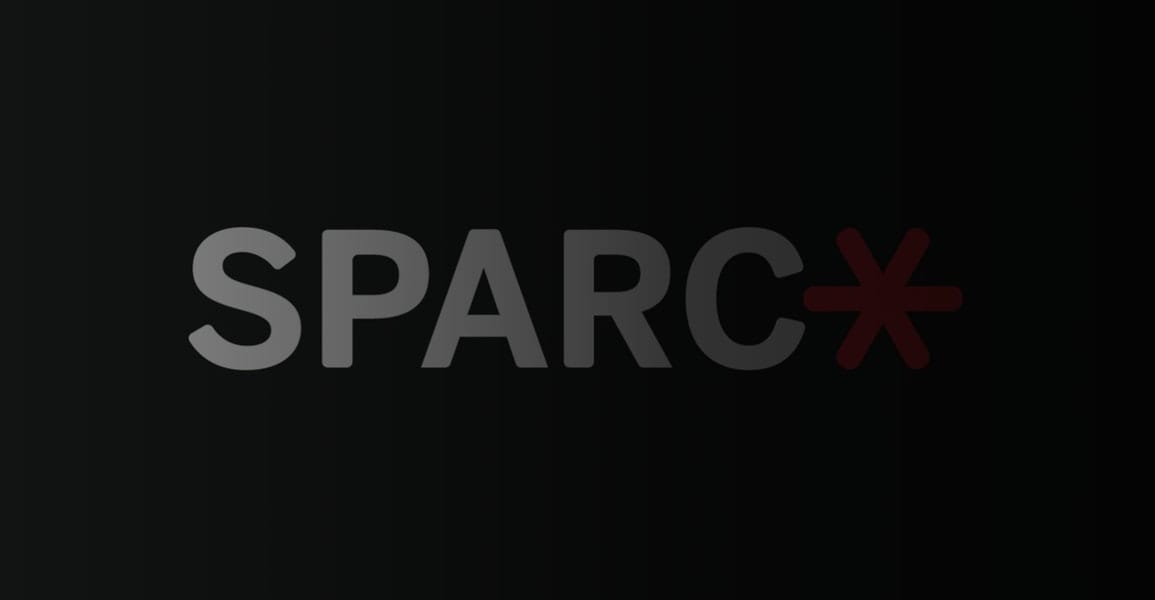
What does transparency look like in action? The Center for Open Science (COS) is a non-profit which reliably files its public disclosures. Recently, I found a problem with a form they had posted, so I contacted Brian Nosek, it’s Executive Director, to ask about it. He responded promptly, got his Director of Finance involved, and in 15-20 minutes the matter was all cleared up — COS was happy to have had someone catch the problem early, I had my answers, and life moved on.
If only SPARC — which postures about transparency and openness — were capable of any similar level of disclosure or interaction.
SPARC’s parent — the New Venture Fund (NVF) — has been called a “dark money” organization, and this seems borne out by various bits of evidence. It is running two relevant-to-us fundraising entities that don’t need to disclose information, including an organization with millions of dollars, the word “philanthropy” in its name, yet it only advises others on how to spend their money, making no major grants itself.
This article covers three NVF projects or sub-projects — SPARC, the Open Research Funder Group (ORFG), and the Science Philanthropy Alliance (SPA). All were asked for information, and none responded — unlike COS.
SPARC — Unwilling to Share a Contract
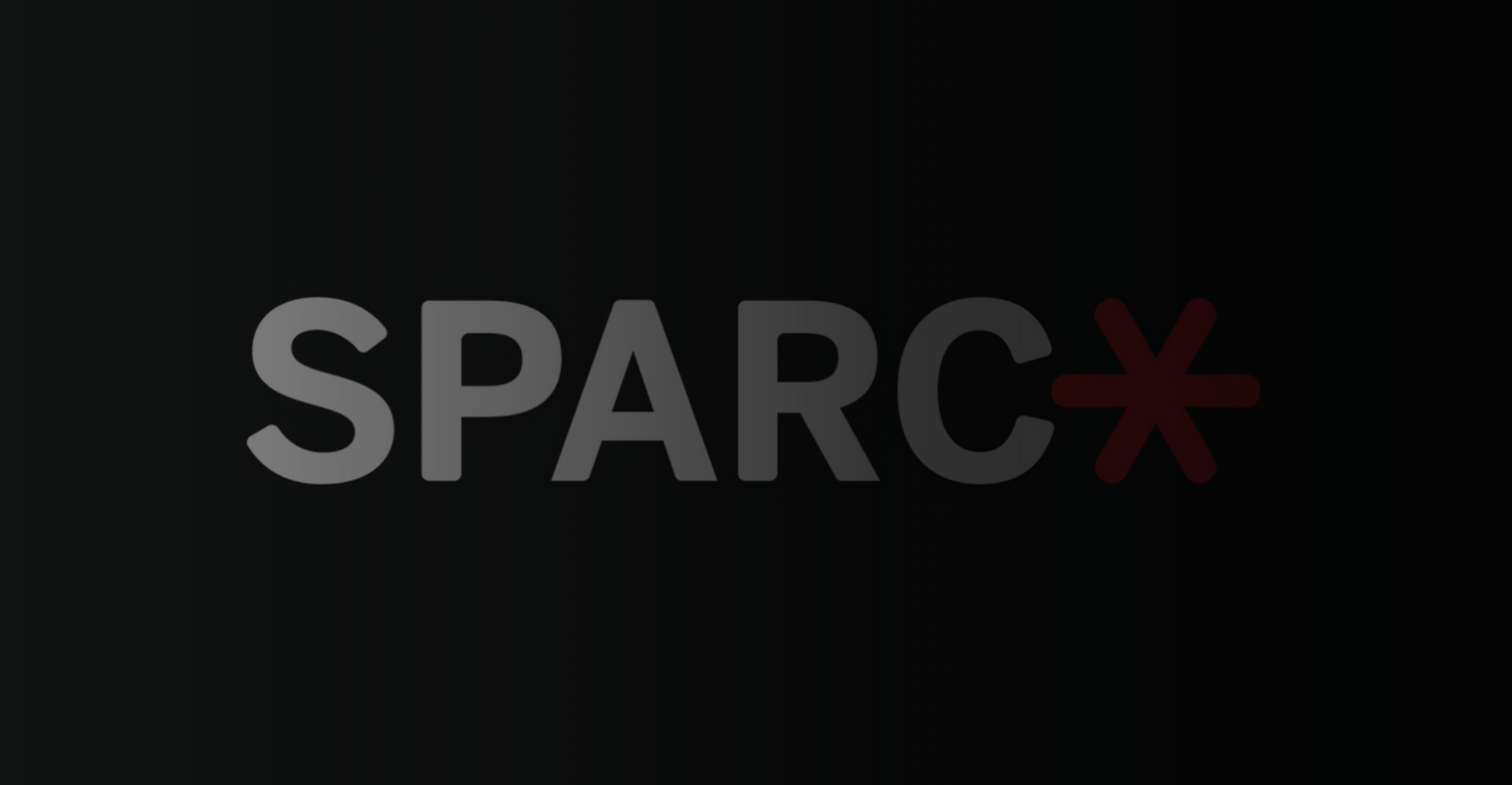
When ARL turned SPARC over to NVF in 2014, it’s seems unlikely NVF was able to contract with a legitimate tax-paying organization with a tax ID (EIN). There is none for SPARC. More likely, NVF was forced to contract directly with SPARC’s Executive Director, Heather Joseph, individually.
As we ask about who NVF contracted with at SPARC, recall that SPARC likes to share other organization’s contracts:
Last week, when I asked SPARC for a copy of its contract with NVF, I received no response.
Even though SPARC likes to promote transparency, and has collected a set of publisher contracts it offers to share with libraries to help them with negotiations, it was not willing to share its NVF fiscal sponsorship agreement. These are not difficult to find online, from arts organizations to universities to various foundations.
As you may recall, in her interview with Richard Poydner, Joseph implied that while SPARC could share more, some entity restricts the information SPARC can share:
. . . there are areas where the decision on public posting is not solely up to SPARC.
Given the vagaries and lack of direct information, I’m going to assume — unless proven wrong — that NVF contracted with Joseph individually, and is preventing the agreement from being shared. Prove me wrong.
The Open Research Funding Group (ORFG)
Like SPARC, ORFG premises its existence on openness — “We believe openness is better for philanthropy . . .” — with the full blurb on its home page reading:
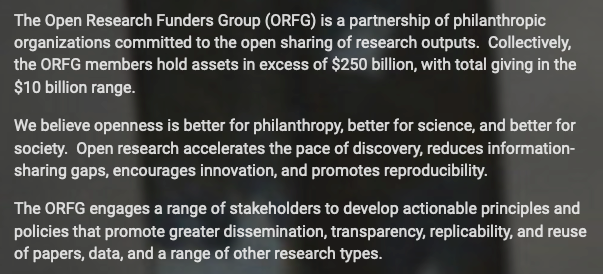
The ORFG web site doesn’t list its donors, and requests for a list of donors and also for a list of grants it has made went unheeded. However, they do describe the genesis of ORFG in 2015, which included a grant from the Robert Wood Johnson Foundation (RWJF). According to RWJF disclosures, a grant for $84,000 was made to NVF in 2015. There is no documentation of a grant to ORFG, but it seems safe to assume this is the inciting grant.
While we don’t know the full extend of ORFG funding, I was able to identify $525,000 in grants specifically designated to ORFG:
- 2016-17 — Arnold Foundation — $25,000
- 2017 — Sloan Foundation — $50,000
- 2017 — Gordon and Betty Moore Foundation — $20,000
- 2017-20 — Helmsley Charitable Trust — $50,000
- 2019 — Gordon and Betty Moore Foundation — $20,000
- 2020-24 — Arnold Foundation — $80,000
- 2021-24 — Templeton Foundation — $230,000
- 2021-24 — William + Flora Hewlett Foundation — $50,000
So, we know money has gone in, but we don’t know if this is the totality due to the lack of transparecny at SPARC and its related entities. We also don’t know how the money has been spent, if it has. And this question becomes a bit more arresting when you consider another NVF project around the funding of science.
Science Philanthropy Alliance (SPA)
Another NVF project in the scientific space shares funders with SPARC and ORFG, and also has been non-responsive to requests for transparency.
SPA was founded in 2013, and consists of a number of representatives from different funders. Its first President, from 2015-2020, was Marc Kestner, who was an employee of NVF, with a salary of $338,553 in 2019. Its current President is France A. Córdova, who previously led the National Science Foundation (NSF) and took over SPA in May 2021. Whether she is also paid by NVF is unknown, as is her salary level. It should be disclosed in the next 990 NVF files.
SPA has raised at least $4.9 million since 2013.
The Gordon and Betty Moore Foundation donated $275,000 to SPA in 2013 “[t]o facilitate management of project funding for the Science Philanthropy Alliance’s Year 1 activities.” Of the $4.9 million I could find, the Moore Foundation accounted for $2.6 million, or more than half. Oddly, the SPA’s domain is also registered to the Moore Foundation:
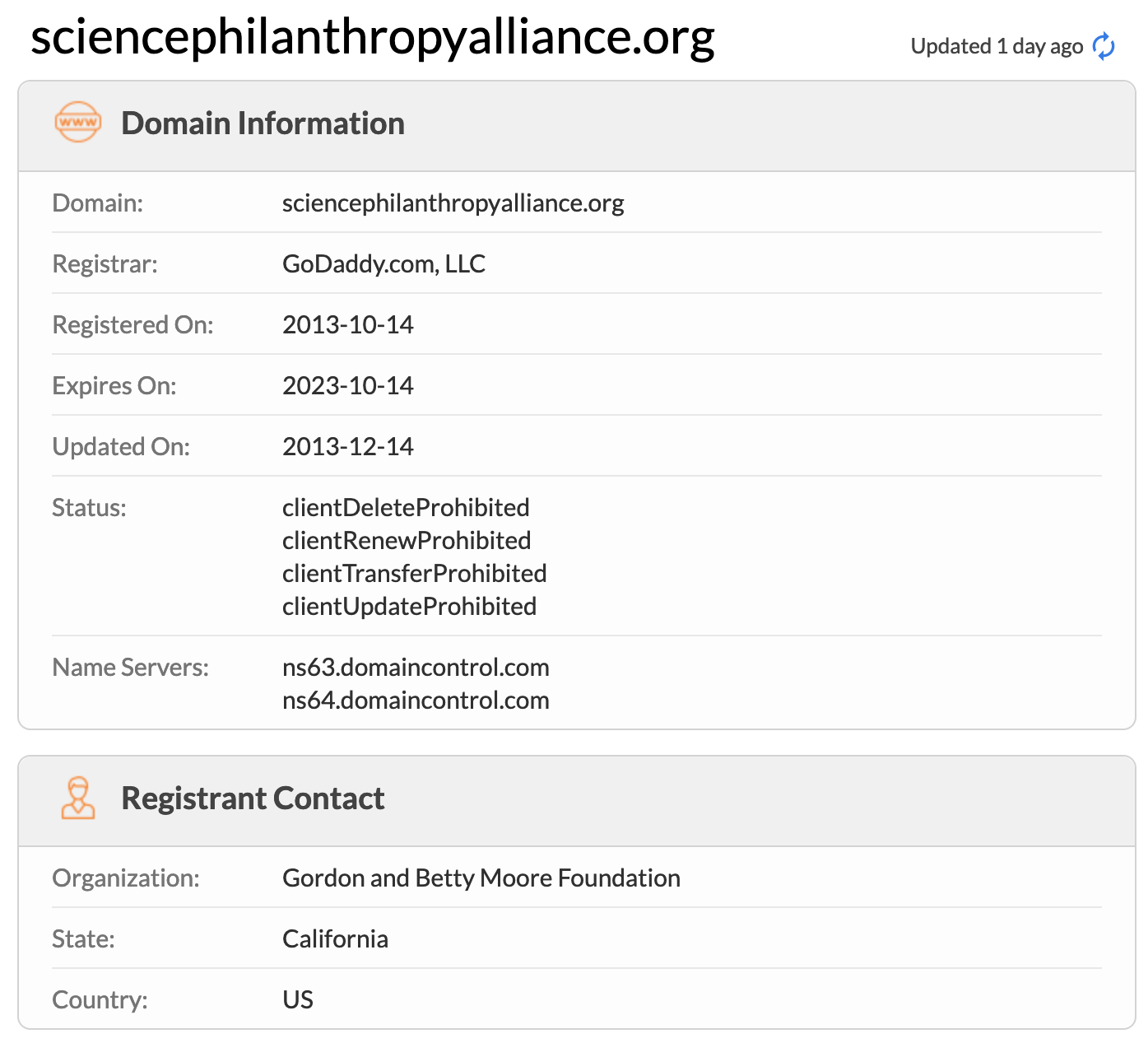
One identifiable thing SPA has done is to create a channel on the science magazine Nautilus. It also touts some reports here and there. But beyond this, without a list of grants disbursed, it’s hard to know what it’s been doing.
Perhaps that’s because it doesn’t make grants, as a story in 2019 from the Capital Research Center asserts:
Even though it claims that funding basic research “can answer the deepest, most fundamental questions we have about the world,” SPA does not make grants. Rather, SPA serves as an advisor to organizations and philanthropists who do. Put simply, SPA tells foundations and billionaires how to spend their money. . . . Even if the project doesn’t support a larger policy agenda, it does nothing of real use. Advising other organizations on how to spend money is not true philanthropy. The money that SPA spent on the two highest paid employees . . . could fund many of the programs that the project has delegated to universities, other nonprofit organizations, and the government.
Recall that NVF’s parent, the for-profit Arabella Advisors, also does this. It seems feasible that SPA is working as a proxy for NVF to “advise” rich donors to give money to NVF projects, helping to drive a flywheel of funding.
It’s also likely that Arabella Advisors secures fees from SPA and ORFG, as well as SPARC, taking 8-9% of the donations for its accounting, legal, HR, and other services. As you might recall, these fees from NVF to its for-profit umbrella (Arabella) have become a large and reliable source of revenue:
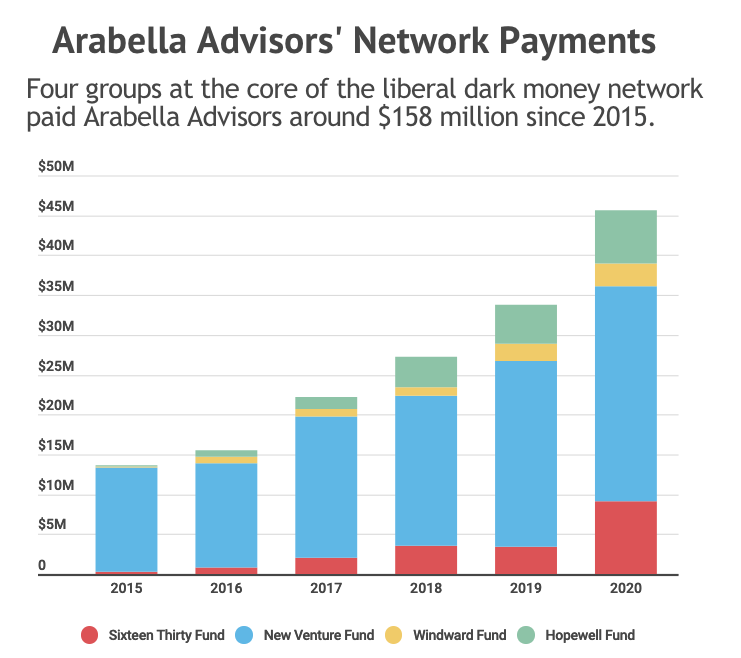
So, we have NVF running projects that are about openness and transparency, yet these projects are not themselves open and transparent. NVF is also running a project that uses the word “philanthropy” in its name, yet does nothing philanthropic.
A major problem can arise with fiscal sponsorship relationships when the practices of the sponsor are at odds with the mission of the project involved.
Will SPARC find these conflicts to be too much?
More likely, SPARC and ORFG will remain in NVF’s shadow, along with SPA — pretending to be about openness and transparency, while obscuring important aspects of what they do and where their money goes.
Related Articles
- SPARC, PACs, and Paychecks
- OA.Works, SPARC, and More Questions
- An Undisclosed Conflict of Interest
- A Board Seat, Then a Top Donor
- Examining Fiscal Sponsorship
- SPARC — More Questions, No Answers
The Geyser — Hot Takes & Deep Thinking on the Info Economy is a reader-supported publication. To receive new posts and support my work, consider becoming a free or paid subscriber.